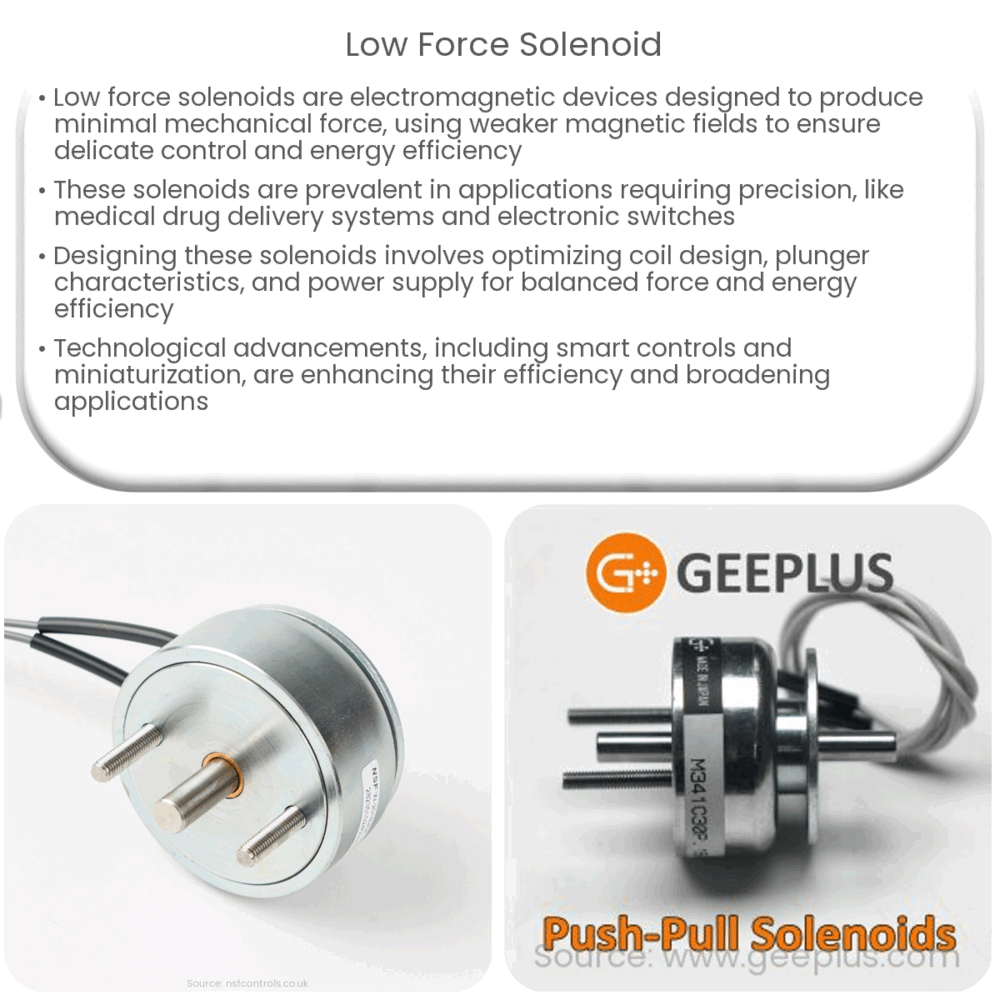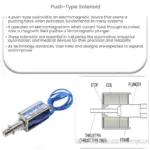A low force solenoid is an electromagnetic device designed for precise, energy-efficient operation with minimal heat generation.

Understanding the Basics of a Low Force Solenoid
A low force solenoid is a type of electromagnetic device that is specifically designed to produce a relatively small amount of mechanical force. It operates on the same fundamental principles as a standard solenoid, but with a few key differences that significantly impact its performance characteristics and applications.
The core of a solenoid is a coil of wire, typically wound around a movable iron core or plunger. When an electrical current is applied to the coil, it generates a magnetic field which either attracts or repels the plunger, depending on the direction of the current. This movement of the plunger can then be used to perform mechanical work, such as moving a switch or valve.
In a low force solenoid, the coil is designed to generate a weaker magnetic field. This might be achieved by using fewer turns of wire in the coil, a smaller current, or other design modifications. The end result is a solenoid that produces less force, but also consumes less power and generates less heat. This makes low force solenoids ideal for applications where delicate control, energy efficiency, or low heat generation is important.
Applications of Low Force Solenoids
Low force solenoids are employed in a wide variety of applications, including delicate instruments, small devices, and situations where power supply or heat dissipation may be a concern.
In the medical field, for instance, low force solenoids are often used in drug delivery systems, where they can accurately control the amount of medication being dispensed. These solenoids need to be highly precise and gentle to ensure patient safety, making the low force characteristic essential.
Similarly, in the world of electronics, low force solenoids can be found in many types of switches and relays. In these applications, the solenoid’s job is often to move a small, light component such as a switch or a contact. Because these components are so light, a high force solenoid could easily damage them. Instead, a low force solenoid provides just enough force to reliably move the component without risking damage.
In terms of energy efficiency, low force solenoids are particularly beneficial in battery-powered devices. Because they draw less current, they can help to extend the device’s battery life, making them an attractive choice for portable equipment and remote sensing devices. Similarly, their low heat generation makes them suitable for use in environments where heat dissipation might be challenging or disruptive.
Design Considerations for Low Force Solenoids
Designing a low force solenoid requires careful consideration of several factors. Perhaps the most crucial factor is the coil design. The number of turns in the coil, the type of wire used, and the diameter of the coil all impact the strength of the magnetic field generated, and thus the force produced by the solenoid.
Another significant aspect is the design of the plunger or armature. Its material, size, and shape can affect the magnetic flux and the overall efficiency of the solenoid. Non-magnetic materials or smaller plungers may be used to reduce the force generated.
The power supply also plays a crucial role in determining the force output. Lower voltages and currents result in less force but also less heat generation and power consumption. Thus, a balance must be struck between achieving the desired force and maintaining energy efficiency.
Advancements in Low Force Solenoid Technology
As technology advances, so too does the sophistication and potential applications of low force solenoids. Recent developments in materials science, such as the advent of high-performance magnetic materials and better electrical insulators, have allowed for the creation of even more efficient and powerful low force solenoids.
One notable advancement is the incorporation of smart technology and digital control systems into solenoids. This allows for real-time monitoring and control of the solenoid’s operation, which can lead to improved performance, greater reliability, and even predictive maintenance capabilities.
In addition, the advent of miniaturization in electronics has opened up new possibilities for low force solenoids. As devices get smaller and more sophisticated, the demand for tiny, precise, low force solenoids is increasing. This has led to the development of microsolenoids, which are capable of generating precise movements and forces at a very small scale.
In conclusion, low force solenoids offer a range of advantages over their high force counterparts, including precision, energy efficiency, and low heat generation. Their wide range of applications, from medical devices to consumer electronics, demonstrates their versatility and importance in today’s world. As technology continues to advance, it’s clear that low force solenoids will continue to play a vital role in many aspects of our lives.



